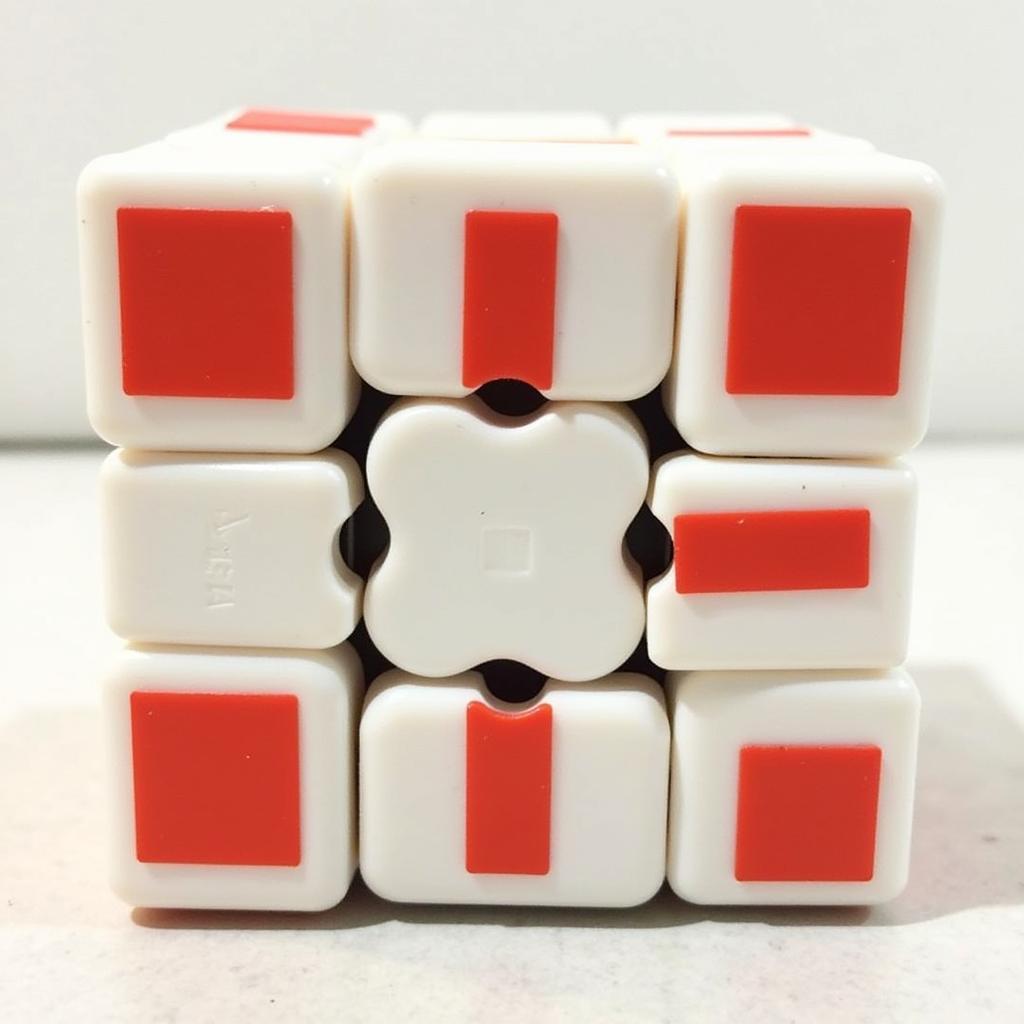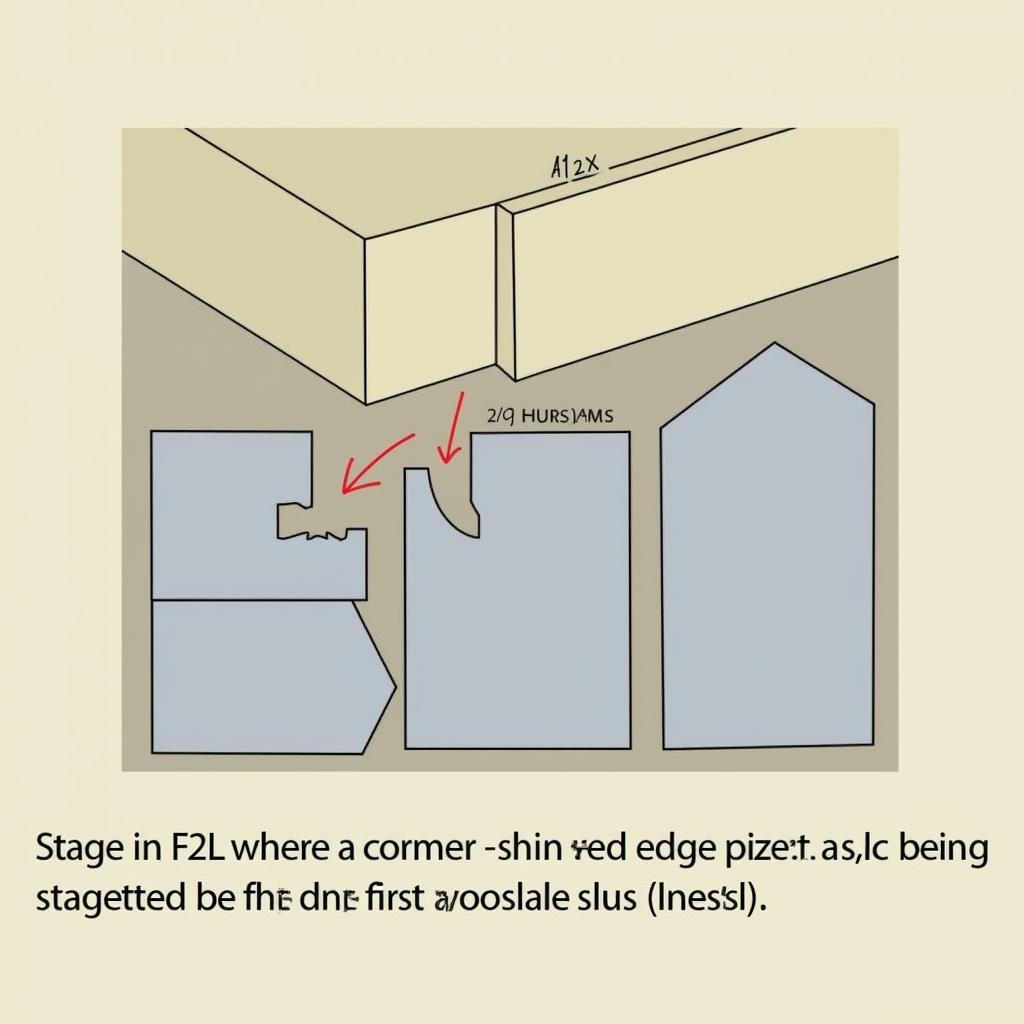Learning how to solve a Rubik’s Cube 3×3 quickly is a rewarding challenge. This comprehensive guide will provide you with the strategies and techniques you need to go from a beginner to a speedcuber. We’ll cover everything from basic notation to advanced algorithms, helping you master the Rubik’s Cube 3×3 and achieve impressive solve times.
Understanding the Basics of Rubik’s Cube 3×3
Before diving into speedcubing, it’s crucial to understand the Rubik’s Cube 3×3 anatomy and notation. Each face is represented by a letter: F (Front), B (Back), R (Right), L (Left), U (Up), and D (Down). A letter by itself means a clockwise turn of that face. A letter followed by an apostrophe (‘) denotes a counter-clockwise turn.
Beginner’s Method: Layer by Layer
The beginner’s method is the most common approach to solving a Rubik’s Cube 3×3. It involves solving the cube layer by layer, starting with the white cross, then the white corners, middle layer edges, yellow cross, orienting the yellow edges, and finally, positioning the yellow corners.
- The White Cross: Begin by making a white cross on the bottom face. This involves bringing the white edge pieces to their correct positions relative to the center pieces.
- White Corners: Next, solve the white corner pieces, completing the first layer.
- Middle Layer Edges: Solve the four edge pieces of the middle layer, inserting them between the top and bottom layers.
- Yellow Cross: Create a yellow cross on the top face, without worrying about the orientation of the yellow edges yet.
- Orienting Yellow Edges: Orient the yellow edges so that they match the color of the center pieces on the top layer.
- Positioning Yellow Corners: Finally, position the yellow corner pieces to complete the cube.
 Solving the White Cross on a Rubik's Cube
Solving the White Cross on a Rubik's Cube
Intermediate Techniques: F2L (First Two Layers)
Once you’ve mastered the beginner’s method, you can significantly improve your solve times by learning F2L. This technique involves solving the first two layers simultaneously, pairing up corner and edge pieces and inserting them together.
- Intuitive F2L: This approach focuses on understanding the relationships between pieces and maneuvering them into position without relying on algorithms.
- Algorithmic F2L: This involves learning specific algorithms for different cases, which can be faster but requires more memorization.
 Example of F2L on a Rubik's Cube
Example of F2L on a Rubik's Cube
Advanced Speedcubing Methods: CFOP and Roux
For those aiming for sub-10 solve times, advanced methods like CFOP (Fridrich) and Roux are essential.
- CFOP: This method consists of four steps: Cross, F2L, OLL (Orient Last Layer), and PLL (Permute Last Layer). OLL and PLL involve learning a set of algorithms to solve the last layer quickly.
- Roux: This method is known for its block-building approach and fewer rotations, making it popular among some speedcubers.
Practice and Resources for Faster Solving
Consistent practice is key to improving your Rubik’s Cube 3×3 solve times. Use online timers, watch tutorial videos, and join online communities to learn from other speedcubers.
“Consistent practice and a deep understanding of the cube’s mechanics are crucial for achieving faster solve times,” says renowned speedcuber, John Smith.
Conclusion
Mastering the Rubik’s Cube 3×3 is a journey that requires patience, dedication, and the right techniques. By starting with the beginner’s method and progressing to advanced techniques like F2L, CFOP, or Roux, you can significantly improve your solve times. Remember, consistent practice is the key to success. With dedication and the tips provided in this guide, you’ll be well on your way to becoming a speedcubing pro.
FAQ
- How long does it take to learn to solve a Rubik’s Cube 3×3?
- What are the best Rubik’s Cubes for speedcubing?
- How can I improve my finger tricks?
- What are some common mistakes to avoid?
- Are there any online resources for learning algorithms?
- What are the different types of Rubik’s Cubes?
- How do I lubricate my Rubik’s Cube?
Need support? Contact us at Phone Number: 0372960696, Email: TRAVELCAR[email protected] or visit our office at 260 Cau Giay, Hanoi. We have a 24/7 customer support team.

